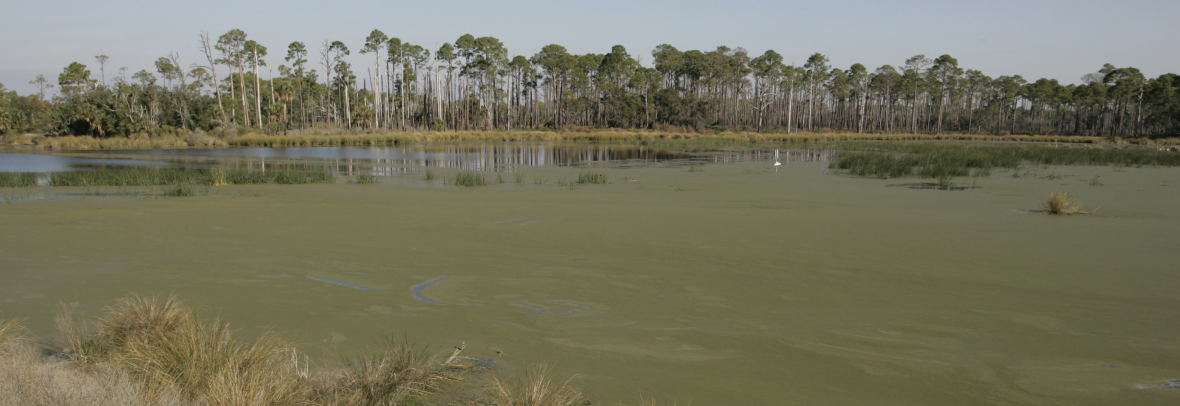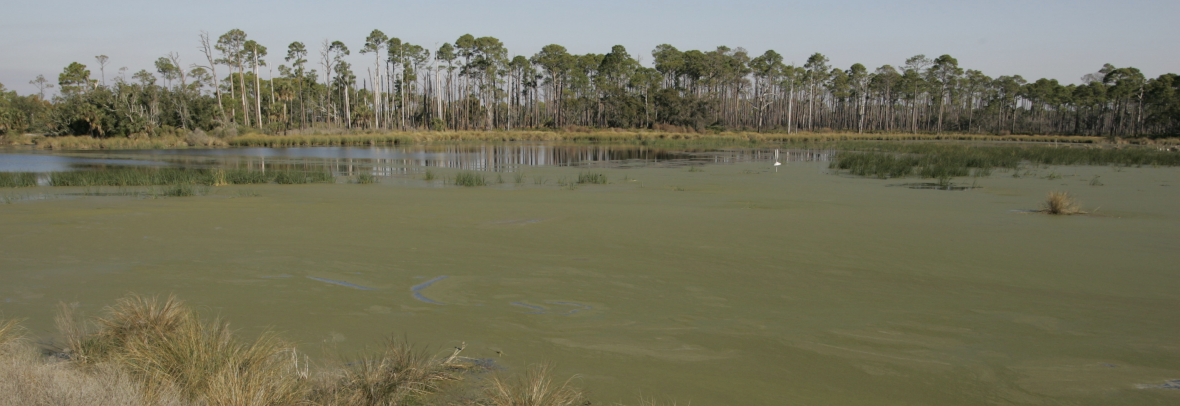
A new study shows algal blooms have wide-reaching financial impacts on Florida’s economy, including lowing property values.
FORT LAUDERDALE — Algal blooms can mean toxic fumes, green muck, nasty stench and death for seagrass and marine animals. All of it is bad for Florida’s economy and sometimes human health. But just how bad has been murky — until now.
A group of Florida nonprofits has teamed with environmental economics analysts Greene Economics to put actual numbers on what happens to local businesses and property values during harmful algal blooms.
The report, readied by Captains for Clean Water, the Conservancy of Southwest Florida and the Sanibel Captiva Conservation Foundation, used Southwest Florida as a case study. Specifically, researchers pulled data for Collier, Charlotte, Lee counties, an area that stretches from the wilderness of Big Cypress National Preserve, west and north through Marco Island, Naples, Fort Myers and Charlotte Harbor.
Though it was a west-coast report, parallels exist on the east coast — the Stuart area and Indian River Lagoon suffer from similar algal blooms, as do Biscayne Bay and Florida Bay, where the Everglades meets the Gulf of Mexico.
The results of the analysis show that if an algal bloom like the ones that kneecapped the Collier, Charlotte and Lee counties in 2005, 2006 and 2018 struck in 2024 or 2025, the study area would lose more than $460 million in commercial and recreational fishing, 43,000 jobs, $5.2 billion in local economic output, $17.8 billion in property values.
The National Oceanic and Atmospheric Administration defines Harmful Algal Blooms (HABs) as events when fresh or saltwater algae grows “out of control while producing toxic or harmful effects on people, fish, shellfish, marine mammals, and birds … human illnesses caused by HABs, though rare, can be debilitating or even fatal.”
Harmful blooms are fueled by nutrient runoff, leaking septic systems, excess fertilizer and, in the case of both the east and west coast of Florida, Lake Okeechobee runoff. That runoff, which can be full of both blue-green algae, and the phosphorus and nitrogen nutrients that boost blooms, has traditionally been released in spring and summer, as the Army Corps of Engineers manages lake levels through Florida’s wet season.
And though red tide is a naturally occurring bloom, recent research has found that it is exacerbated by nutrient runoff. The report analyzed data from the Florida Statewide Comprehensive Outdoor Recreation Plan, the Florida Fish and Wildlife Conservation Commission and NOAA.
East coast impacts
Though the research looked at Southwest Florida as a case study, parallels exist on the east coast.
Fishing guide Mike Holliday, who also works for Captains for Clean Water, said that locals around Stuart and the Saint Lucie Inlet refer to the summer of 2016 as the “Lost Summer” due to rampant algal blooms, and 2018 was just as bad.
Polluted and often algae-laden Lake Okeechobee discharges flow west to Charlotte Harbor, but also east along the Saint Lucie River to dump into the southern end of the Indian River Lagoon. The freshwater blue-green algae causes goopy green muck to pile up along the seawalls of the wealthy, and the Lake Okeechobee nutrient load and freshwater can kill marine seagrass meadows crucial to the lagoon’s food chain.
Holliday has for years specialized in finding sea trout and snook, which live in inshore waters where blooms have been more destructive. He said severe blooms flowing out of Lake Okeechobee reach all the way to ocean beaches and turn the water pea green. When the algae piles up it looks like big slimy puzzle pieces floating by the boat.
“For me it’s scary because of the links (blue-green algae) has had to neurological diseases,” he said. “But I can’t not work. So, I’m fishing around it.”
Holliday often fishes with live bait. “I’m throwing my cast net and putting the net in my mouth when I’m throwing it on bait.”
Algae also gets into his livewell. “I open my livewell, and the entire surface of my livewell is coated with it. I know I’m breathing it. I put my hand in there 100 times a day.”
Clients are not particularly put off by the brown water flowing down from Lake Okeechobee, but once the algae makes news, business suffers.
“When we get the full-blown blooms, it basically shuts the business down. What I try to do is go offshore.”
In deeper ocean water, away from the blooms, he fishes for sailfish, blackfin tuna and kingfish. Still, the brown freshwater can plume miles out into the ocean where waters are 100 feet deep. The quest for clean water costs him gas.
“You can run for 30 minutes and still be in dirty water,” he said.
Recreation
Recreational activities such as fishing, hiking, birding and boating are worth over $25 billion per year across the three-county study area in the Greene report. Saltwater fishing and beach activities, two arenas heavily impacted by algal blooms, combine for a total of $6.51 billion annually.
The report found that tourism and recreation, which rely on clean water, account for 12.7% of the study area’s employment and 7.5% of the GDP.
When the study combined other marine industries, such as boat building and marine construction, water-related jobs accounted for 17.5% of the employment and 11.4% of the GDP of the three counties.
There’s an economic ripple effect to having fun on the water.
For example, the report said, people who fish spend money on their boats, bait, guides, licenses and food. Those who travel to Florida to fish are staying in hotels, eating at restaurants and also hiring guides. Tarpon fishing alone generated more than $63 million in annual revenue in parts of the region.
The three counties reaped sportfishing expenditures of more than $1.4 billion per year from resident and visiting anglers.
Red tide can be particularly disruptive. Studies in northwest Florida found that months with red tides resulted in tourism sectors declining 29% to 35% in average monthly revenues.
The baseline value for recreational fishing in the three-county area was $1.44 billion per year, and if a long-term algal bloom occurred, the industry would lose $459.7 million annually.
Commercial fishing
Overall, tonnage of commercial fish catches have decreased in the region since 2000 between 35% and 65%, but that’s not specifically attributable to algal blooms.
However, in Lee County, which has much higher commercial take than the others, commercial tonnage dropped precipitously from 5,000 tons to below 3,000 tons after the algal blooms of 2005 and 2018. It’s unclear if there were regulatory forces at play as well.
Previous studies found that in nearby Pinellas County, the seafood businesses generate 14.8% less in monthly taxable sales during red tide events.
All told, the baseline value of commercial fishing in the three-county area was $30.8 million, and in a long-term algal bloom, the industry would lose $4.6 million annually.
Property value and local costs
The Greene report drew on previous economic work by other researchers.
One study, published in 2020 by economist Andrew Bechard, compared sale prices for properties where blooms occur compared where no blooms were present. Bechard found that during a bloom event, residential properties within a mile of an affected area sold for 25% less than those in an unaffected area.
A Florida Association of Realtors study in 2015 found a positive correlation between water quality and increased property values in Lee and Martin counties.
Dead fish, manatees and dolphins are not only horrible publicity, the cleanup also hurts the local economy, the report found. 2018 was a particularly bad year — Sanibel spent more than $2 million cleaning up a red-tide event from the end of July through the first week of September and Fort Myers spent over $400,000 cleaning up the same event.
Lee County cleaned up 2,000 tons of rotting sea life from beaches due to red tide that year and was awarded $3 million in grant money by the Florida Department of Environmental Protection to do so.
A wet El Niño winter
Though the Army Corps of Engineers managed to not release any waters from Lake Okeechobee into the east and west coast estuaries in 2023, the wet El Niño winter we’re experiencing does not bode well.
The lake is already at 16.18 feet. The average height in mid-January is usually around 14.5 feet. Captains for Clean Water and other groups fear this could mean water releases if the wet weather continues.
In the end, the report found that poor water quality is antithetical to both healthy ecosystems and healthy local economies.
“It is clear that southwest Florida is a ‘water community;’ the water draws both tourists and residents to the region and is an essential part of everyday life,” the report read.
It also looked to a future as one that includes not only more coastal development, but also climate change, sea-level rise, and the ensuing saltwater intrusion.
Poor water quality, and “the magnitude of those negative impacts is likely to increase as the frequency and intensity of events compound on an already weakened ecosystem,” the report said.
Over time, the character of the region will change.
For Holliday the issue is immediate.
“The threat of mycobacteria and the possibility of getting any of those neurological diseases makes people not want to come here,” he said. “And the people who are here on vacation are not going to the beach. They’re not swimming in that. If you have a restaurant on the water, nobody’s going to go sit by that.”
©2024 South Florida Sun-Sentinel. Visit sun-sentinel.com. Distributed by Tribune Content Agency, LLC.
Go to Source
Author: amyc



